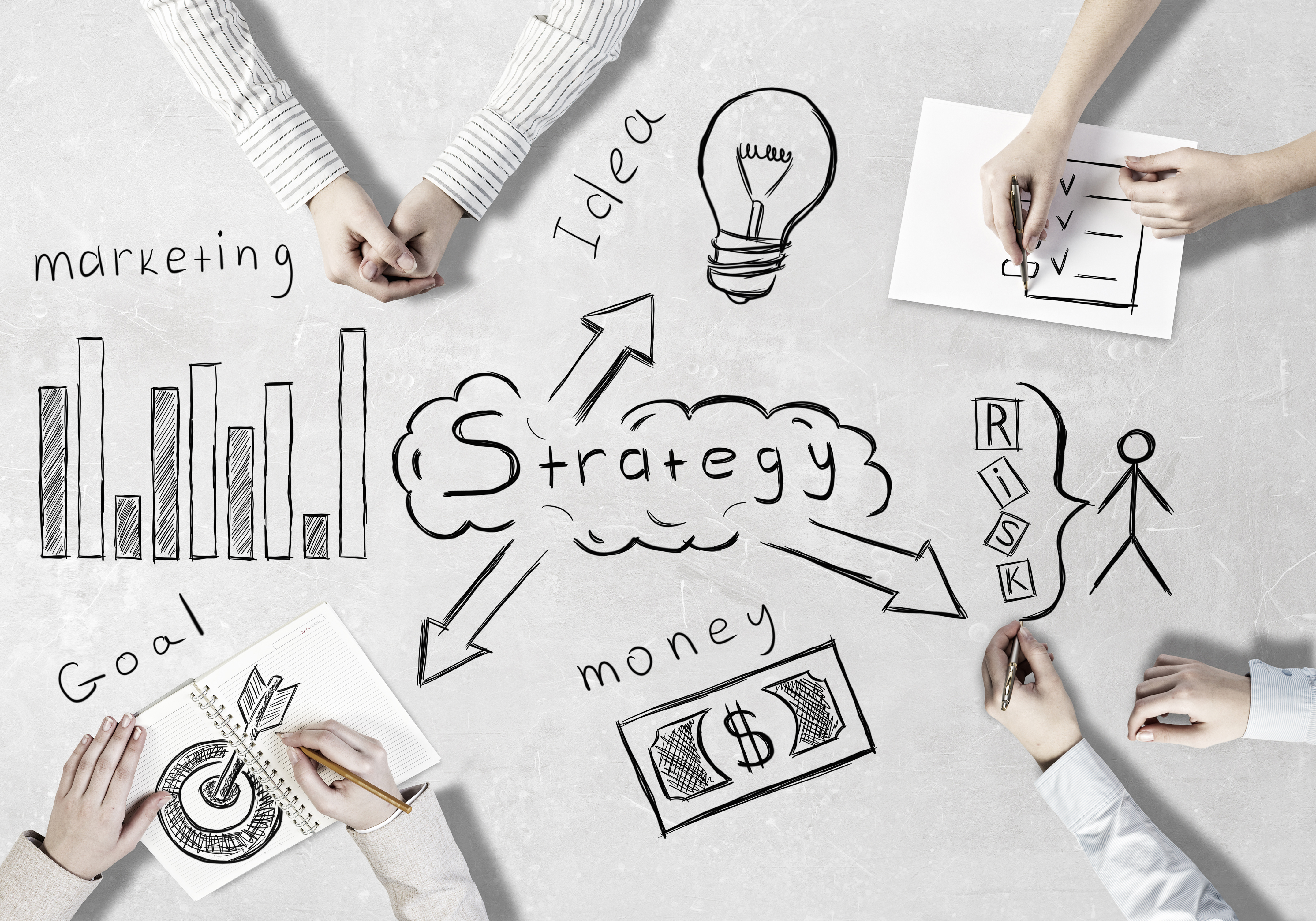Table of Contents
Ah, the age-old struggle between generations. We’ve all been there – whether it’s trying to convince our grandparents that we’re not addicted to technology or attempting to explain why our teenage children can’t seem to look up from their phones for more than a minute at a time.
But with today’s increasingly diverse workforce and rapidly changing workplace dynamics, bridging the generational gap has never been more essential.
It may feel like you’re stuck in an endless loop of eye-rolling and sarcastic comments, but don’t worry – help is on its way! In this article, we’ll arm you with some practical tips and best practices to navigate these potentially stormy waters.
After all, who doesn’t crave that sweet taste of freedom when it comes to peaceful communication across generations? So buckle up, folks; it’s time to bring harmony back into your life (and office)!
Identifying Common Generational Differences
It’s no secret that generational stereotypes and age-based biases can often create conflict in the workplace, at home, or even among friends.
Whether you’re trying to bridge the gap between Baby Boomers and Millennials or navigating the differences between Gen X and Gen Z, it’s essential first to identify what makes each generation unique. By understanding these nuances, we’ll be better prepared to find common ground and foster a sense of unity.
Generation Z is the demographic cohort born between the mid-1990s and early 2010s. The people in this generation are highly tech-savvy, independent, and have an entrepreneurial mindset. However, their age and life experiences make them think differently than older generations, making them more likely to challenge authority or push back against traditional values. This can lead to conflict when working with them in a workplace setting.
Generation Y, also known as Millennials, are members of the population born between 1980 and 2000. With their vast knowledge of technology and digital media, they have become increasingly important players in the modern workplace and bring a unique perspective to the table. However, Generation Y can often struggle when it comes to traditional work environments that were designed for earlier generations.
Generation X (born between 1965 and 1980) is the generation between the Baby Boomers and Millennials. They are often called the “forgotten generation” due to their small size and lack of attention from society. However, this generation has experienced many changes in technology, culture, economics, and politics that have shaped their beliefs and views of the world.
The Baby Boomer generation (born between 1945-1964) has been known to clash with other generations in the workplace, such as Generation X and Millennials. They are often viewed as stuck in their ways, resistant to change, and unable to keep up with the times.
One key aspect is recognizing that everyone desires freedom, albeit in different ways. For instance, older generations might prioritize financial stability as their ticket to independence, while younger ones may value flexibility and personal autonomy above all else.
So instead of getting caught up in generalizations about specific age groups, let’s focus on how we can appreciate one another’s perspectives and experiences. That way, we can work towards establishing effective communication strategies tailored for every individual – not just based on their birth year.
And speaking of communication…
Establishing Effective Communication Strategies
You can’t teach an old dog new tricks, or so the saying goes. But when it comes to managing conflict between generations, breaking down communication barriers is essential for fostering understanding and harmony within a diverse group.

One of the most effective ways to bridge this gap is by establishing open communication lines that cater to each generation’s unique needs and preferences.
Active listening enables all parties involved to express their thoughts and feelings freely without fear of being misunderstood or judged. By paying close attention to verbal and non-verbal cues, we can better understand where someone else is coming from and respond accordingly with empathy and consideration.
As we continue our journey towards intergenerational harmony, let us remember that opening our hearts and minds allows us to embrace the richness that lies beyond age differences.
Next, we will discuss how encouraging collaboration and teamwork among different generations can help bring out the best in everyone.
Encouraging Collaboration And Teamwork
Cross-generational collaboration and intergenerational teamwork are critical aspects of managing conflict between generations. It’s time to embrace the unique qualities that individuals from different age groups bring to the table and recognize the potential for synergistic relationships when people of varying experiences work together harmoniously.
You know what they say: two heads are better than one! So why not apply this concept across generations? The result will be a more dynamic, innovative team environment where everyone feels valued and has an opportunity to contribute.

One key strategy for encouraging collaboration and teamwork is fostering open communication within your organization. Ensure each generation understands their coworkers’ perspectives by promoting empathy, respect, and active listening. As you achieve this level of understanding among employees, new ideas can thrive, leading to increased productivity and growth.
By working together towards common goals, team members gain an appreciation for every individual’s strengths regardless of their age or background—and isn’t that something we all crave? So go ahead—break down those barriers between Baby Boomers, Gen X-ers, Millennials, and Gen Z-ers; let them work side-by-side on projects that showcase their unique talents while learning valuable lessons from one another.
Now that we’ve laid the groundwork for successful cross-generational teamwork, we must explore how implementing flexible workplace policies can further enhance our newfound collaborative spirit.
Implementing Flexible Workplace Policies
Having established the importance of collaboration and teamwork in bridging generational gaps, it’s time to explore another key aspect: implementing flexible workplace policies.
In today’s fast-paced world, where individuals crave autonomy, crafting a work environment catering to differing needs is essential for harmonious employee coexistence.
Flexible scheduling and policy customization are powerful tools employers can leverage to create an inclusive atmosphere for all generations. For example, offering varied working hours or remote options allows team members to strike their ideal work-life balance while customizing policies to ensure everyone feels heard and accommodated.
By embracing these principles, companies foster mutual respect and understanding – a critical foundation upon which any intergenerational relationship must be built.
This inclusive approach highlights how listening to diverse perspectives can contribute significantly to organizational cohesion and success.
Fostering Mutual Respect And Understanding
Picture this: you’re attempting to cross a river, but a wide chasm separates the two banks. The only way across is to build a sturdy bridge that connects both sides. This scenario serves as a metaphor for bridging gaps between different generations in the workplace. By fostering mutual respect and understanding, we can create strong connections that lead to better communication and success.
- Encourage open dialogue: Create an environment where all employees feel comfortable sharing their thoughts and ideas, regardless of age or experience level.
- Promote intergenerational empathy: Encourage team members from diverse backgrounds and age groups to share their unique perspectives; this helps everyone gain insight into one another’s experiences.
- Celebrate diversity: Recognize each generation’s value and actively work towards creating an inclusive culture that welcomes individuals with varying skill sets, knowledge bases, and viewpoints.
By implementing these strategies, we encourage harmony within our teams and empower them with the freedom they crave – freedom from judgment, bias, and misunderstanding.
As we continue our journey toward building stronger generational bridges in the workplace, let us explore how providing mentorship and training opportunities can further strengthen these connections while promoting personal growth among colleagues.
Providing Mentorship And Training Opportunities
Bridging the gap between generations is not only about fostering mutual respect and understanding but also involves creating an environment where all individuals can thrive.

By focusing on mentorship and training opportunities, organizations can ensure that younger and older employees feel valued for their unique contributions.
Mentorship benefits everyone involved by providing a platform for skill-sharing importance while enabling personal and professional growth.
It allows seasoned professionals to impart their wealth of knowledge and experience to younger colleagues, who bring fresh perspectives and innovative ideas to the table.
This exchange of skills fosters a collaborative atmosphere where each generation learns from the other’s strengths, ultimately leading to improved overall performance within the organization.
As we continue our journey towards embracing diversity and inclusion, let us remember that harnessing the power of intergenerational collaboration will be vital in driving success.
Embracing Diversity And Inclusion
Embracing diversity and inclusion is crucial to managing conflicts between generations, especially in the modern workforce. Recognizing that diverse perspectives enrich our decision-making abilities, we must strive to create an environment where everyone can bring their unique experiences and ideas to the table.
Inclusive leadership goes beyond acknowledging differences; it involves actively engaging with those different viewpoints, fostering open communication among team members, and ensuring equal growth opportunities.
Several essential practices can help you embrace diversity and inclusion effectively:
- Encourage open dialogue: Create safe spaces within your organization where employees feel comfortable voicing their opinions or concerns without fear of judgment.
- Provide education and training: Offer workshops on unconscious bias, cultural competency, and inclusive language to build awareness and understanding.
- Promote mentorship and sponsorship programs: Pairing individuals from diverse backgrounds helps foster relationships built on trust, respect, and mutual learning.
- Celebrate individuality: Encourage employees to share their unique stories, culture, or talents during cultural celebrations or talent shows.
By implementing these strategies into your organizational culture, you will empower each generation to contribute their best work and promote harmony among them despite any potential age-related conflicts. This positive atmosphere will invite creativity and innovation while boosting morale across all generations present in the workplace.
Now let’s explore how evaluating and adapting management techniques could enhance this harmonious environment.
Evaluating And Adapting Management Techniques
As we navigate the complex world of intergenerational conflict management, we must recognize that our approaches must continually evolve. Management evolution is not just about keeping up with the latest trends or buzzwords; it’s about recognizing that what worked for one generation may not be as effective for another. The key lies in constant technique assessment and adapting our strategies accordingly.
So, let’s dive into evaluating and adapting your management techniques! Embrace the possibility of change and consider how you can empower each individual within your team.
Remember that freedom fuels creativity and innovation, so encourage open dialogue around different perspectives on issues. By fostering an environment where everyone feels heard and respected, you’ll unleash the full potential of your diverse workforce while minimizing generational conflicts.
And who knows – maybe some unexpected synergies will emerge, leading to even greater success for all involved!
Frequently Asked Questions
How Can Organizations Create A Balance Between Embracing Technological Advancements And Catering To The Preferences Of Traditional Generations In The Workplace?
It’s no secret that technology is rapidly transforming how we work, and striking a balance between embracing these advancements and catering to traditional generations can be quite challenging.
One key element in achieving this harmony is embracing flexibility. Organizations can create an environment where everyone feels comfortable and valued by being open to new technological tools and more conventional approaches.
Additionally, fostering intergenerational mentorship allows employees of different age groups to learn from one another, bridging gaps in understanding and nurturing valuable relationships within the workplace.
Ultimately, finding equilibrium lies in recognizing that each generation has unique strengths and experiences they bring to the table – so why not celebrate those differences rather than letting them divide us? Then, together, we can break free from rigid norms and redefine what it means to be successful in today’s ever-evolving world.
What Should Be Done If A Specific Generation Consistently Resists Adapting To New Policies And Practices Despite Efforts To Address Their Concerns?
When facing generational resistance to new policies and practices, it’s crucial to implement effective adaptation strategies that address the concerns of the resistant generation while still moving forward with necessary changes.
Start by fostering open communication, inviting employee feedback, and providing support through training programs tailored to their learning preferences.
Encourage collaboration between generations so they can learn from and appreciate each other’s strengths.
Ultimately, remember that change is inevitable, but empowering your team with knowledge and support will make adapting less daunting for everyone involved.
How Can Organizations Address The Potential For Age-Related Biases In Performance Evaluations And Promotions, Ensuring Fairness Across All Generations?
It’s essential to tackle age-related bias head-on regarding performance evaluations and promotions, ensuring that everyone gets a fair shot at advancing in the workplace.
One way to achieve this is by implementing unbiased evaluation methods, such as anonymous peer reviews or standardized assessments.
Additionally, provide training for managers on recognizing unconscious biases and promoting an inclusive work environment.
Encourage open communication among team members of different generations so they can better understand one another’s strengths and weaknesses.
By fostering a culture of fairness and transparency in your organization, you’ll empower employees across all generations to reach their full potential while safeguarding against age-related discrimination.
What Steps Can Be Taken To Ensure That Generational Differences Are Not Used As An Excuse For Unprofessional Behavior Or A Lack Of Accountability In The Workplace?
To ensure that generational differences aren’t used as an excuse for unprofessional behaviour or a lack of accountability in the workplace, it’s essential to establish clear expectations and guidelines around Generational Accountability and Professional Behavior.
Employees can better understand various perspectives and work styles across different age groups by fostering open communication, promoting empathy, and providing regular training on diversity and inclusion topics.
This approach empowers everyone to take responsibility for their actions while embracing each generation’s unique strengths.
So break free from those restrictive stereotypes, embrace collaboration, and create a harmonious workspace where all generations thrive together!
How Can Organizations Measure The Success Of Their Conflict Resolution Strategies And Policies In Addressing Generational Differences, And Make Improvements As Needed?
Organizations can gauge the success of their conflict resolution strategies and policies in addressing generational differences by implementing Generational Metrics, which help track progress and identify areas for improvement.
By regularly monitoring these metrics, companies can recognize trends, assess the impact of their interventions, and make necessary Policy Adaptations to ensure a harmonious work environment that embraces diversity across generations.
Ultimately, fostering an inclusive culture where everyone feels valued and respected is vital to unlocking your team’s full potential and satisfying that deep-seated desire for the freedom we all share.
Conclusion
In conclusion, achieving harmony amongst the multigenerational workforce is nothing short of a Herculean task. Yet, with determination and strategic planning, organizations can effortlessly conquer this challenge – bringing together millennials, Gen Xers, and baby boomers in perfect synchronization.
So let us embrace the generational differences that make our workplaces rich and diverse ecosystems.
Doing so will foster an environment where collaboration flourishes, and innovation knows no age limits.
The future of organizational success lies in our hands!